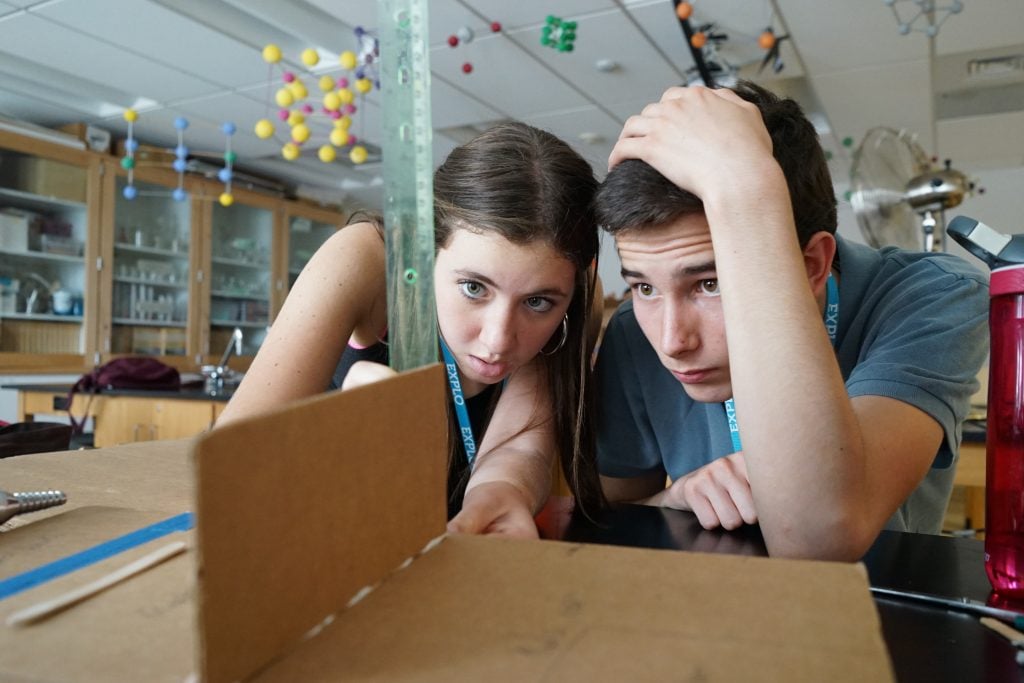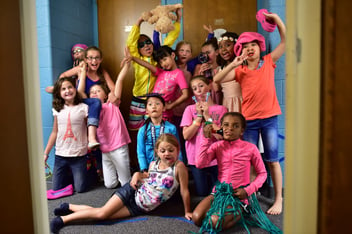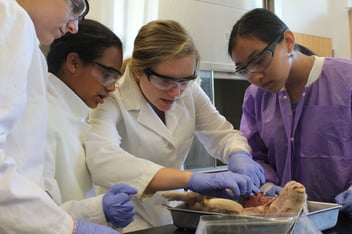The Argument for Physical Literacy in an Increasingly Virtual World

Recently, one of my colleagues — EXPLO Elevate's Director of Programs, Dave Hamilton — shared a story with me about a group of high school students he has been working with in one of Elevate’s critical making courses.
The course invites students to get up out of their chairs and get their hands on everyday materials and new technologies to explore concepts of engineering and design while sharpening their problem-solving and creative skills.
Getting up and doing stuff is not part of most curricula. These kinds of courses are rare in most of our schools, as is the idea that students would need more than brain, keyboard, and maybe a voice. But that’s why EXPLO was there — to get the students hands-on with some engaging content.
At an important juncture during the course, Dave asked the students to measure something using a ruler.
There were blank looks before a brave student asked, simply: “How?”
It quickly dawned on Dave that few of the students actually knew how to use a ruler.
The World Before Digital Analogies
Many people of a certain age remember when the world did not contain digital analogies. There was no digital darkroom, no virtual compass or map — no virtual ruler. There were physical versions of all those things, and they required that you learned how to use them with your body — hands and eyes, brain and brawn.
A loop was created between what you did with your body, and how your brain gained information about the world.
Even if, like me, you were not “good with your hands,” you still had to learn how to use a ruler, yardstick, and tape measure. You had to learn how to employ a straight edge and an X-ACTO knife. If you wanted a go-cart or pinewood derby entrant, you had to use wrenches and screwdrivers and saws and sandpaper. You wrote most of your school papers by hand. From this, a loop was created between what you did with your body, and how your brain gained information about the world.
This is not an anti-technology screed. But the tools we use have consequences in brain development. If, today, most of the actions of our lives are managed and executed by the tools that appear on screens, operated by the swipe of a fingertip or through voice command, something will be gained, and something lost.
Mind and Hand
We are noticing something here at EXPLO: our students do not know how to use their bodies to do things in the same way they once did. They are becoming “physically illiterate,” to borrow esteemed educator Margaret Whitehead’s term.
The plasticity of our brains responds to what our bodies do. It is a conversation that starts in the womb and continues for our entire lives. What we do affects how we think — how our brains make connections between thought and action. This is known as embodied cognition. A few people have lamented that penmanship is no longer required in many of our schools, as the physical practice of forming words with our hands may have trained our brains to a fuller understanding of what those words mean, feel, and do.
I use Photoshop now, too. But I think I have a richer understanding of the digital analogy to “burning in” in Photoshop because I spent many years doing that action in the non-virtual world.
In my life, I didn’t know that photography was for me until I actually started putting my eye to the viewfinder. Until I smelled the sweet-but-acrid smells of the darkroom. Until I moved my hand around quickly and deliberately under the enlarger light in order to darken a too-bright corner of my print. I use Photoshop now, too. But I think I have a richer understanding of the digital analogy to “burning in” in Photoshop because I spent many years doing that action in the non-virtual world. The world where my body speaks to my mind, and my mind changes and remembers and expands.
Again, I am not arguing for the days before computing and computers and smart devices. But I do think that a world in which students are baffled by a ruler is a touch off-course.
Our educational systems need to make sure we are engaging our students fully. As the MIT motto says, Mens et Manus.
Mind and Hand.



